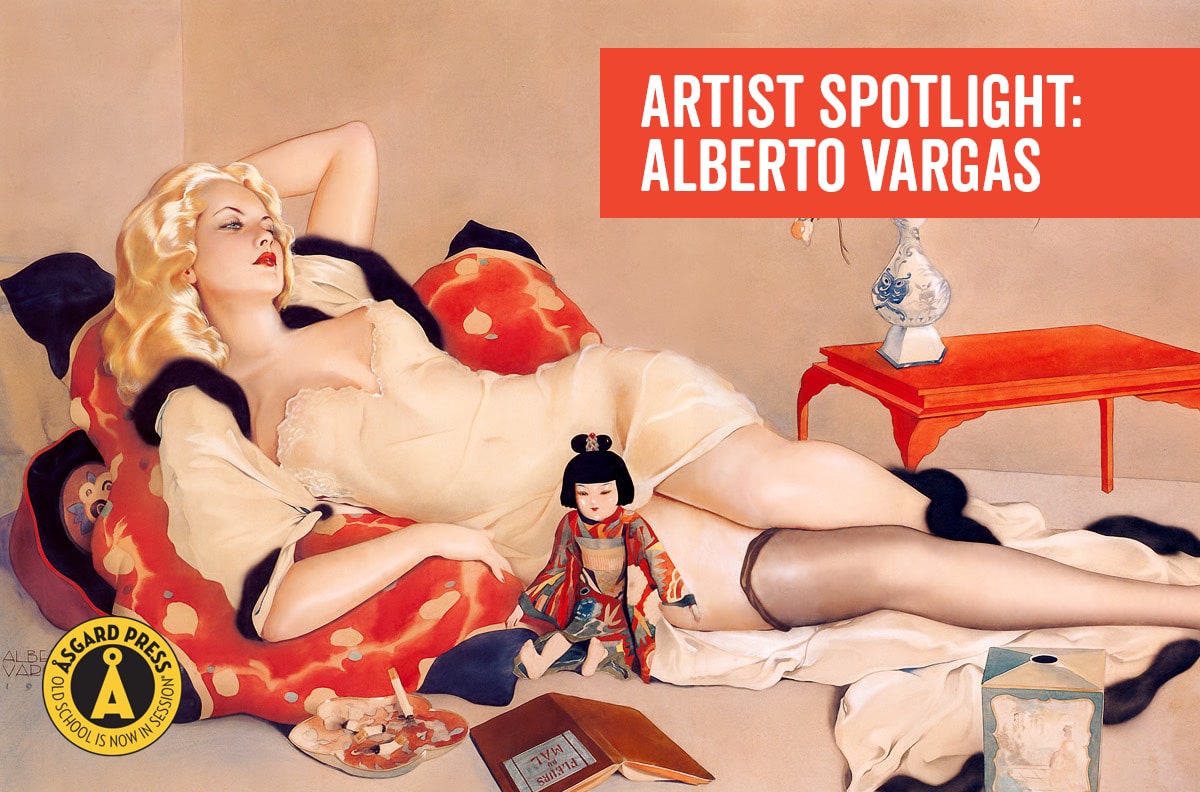Alberto Vargas, The King of Pin-Up Art
Alberto Vargas, born Joaquin Alberto Vargas y Chávez in 1896 in Arequipa, Peru, was the son of Max T. Vargas, a prominent photographer. Alberto Vargas, who’s artistic talent was nurtured by his father through work in the photographic studio, grew up to become one of the most influential pin-up artists of the genre. His soft, idealized, and sublimely detailed paintings of women created an enduring aesthetic for pin-up art that persists today as modern artists continue to be inspired by him. From theater posters to album covers, Vargas’ career spanned decades and his paintings were both influenced by, and had great influence upon, twentieth century beauty standards. Alberto Vargas painted models, actresses, showgirls, and celebrities, immortalizing them as “Vargas Girls” in artwork that is still coveted today and sells for tens of thousands of dollars at auction.
Early Life and Art of Alberto Vargas
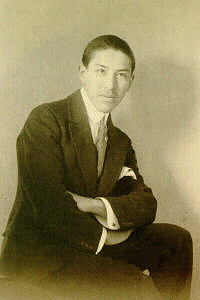
Growing up in Peru at the turn of the twentieth century, Alberto Vargas worked alongside his internationally known photographer father, developing an eye for composition and portraiture, as well as artistic skills such as airbrushing, which would figure significantly in his own, later work. In 1911, Vargas traveled to Europe to study art, a journey which took him to museums in Germany, Switzerland, and France, where, in Paris, he discovered La Vie Parisienne, a male-centered, somewhat risqué magazine that included work by Raphael Kirchner and the spark for pin-up painting was lit. Vargas’ European stay was cut short in 1916 when he began the journey home to Peru as World War I marched across the continent. A stopover in New York proved pivotal to Vargas, who was dazzled by the modern sensibilities and vibrancy of American women. He remained in New York to pursue a career painting the beauty of women in the spotlight.
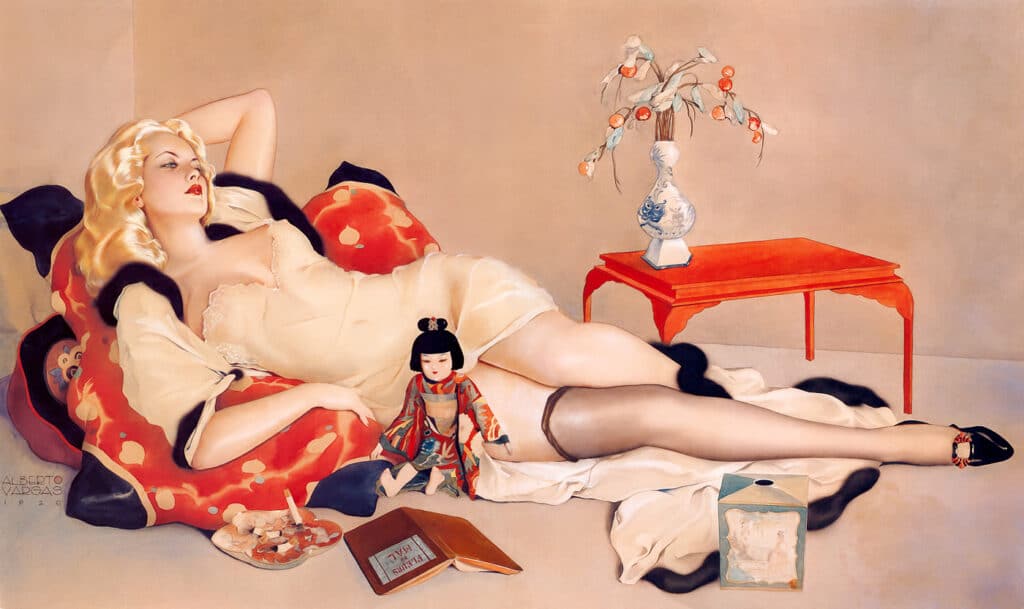
Early Career
When Vargas decided to make his home in New York, he began as a struggling freelance artist creating drawings for sewing patterns and touching up negatives for a photographer. His early days in America proved to be very different from the comfort and economic security he had at home in Peru. Vargas eventually found on-going work with the Ziegfeld Follies, a regular series of theatrical productions on Broadway that heavily featured showgirls, including the love of his life, wife Anna Mae Clift, who served as both model and inspiration for Vargas for the rest of her life. Vargas’ mastery of the airbrush, honed through his years working for photographers, gave his portraits of women a delicate softness that would become his hallmark. He remained busy painting portraits of popular showgirls and developing his artistic style and vision until the Great Depression slowed his income enough to force Vargas to make a move. In 1936, Vargas and Anna Mae moved to California where Vargas made a name for himself creating movie poster art, designing film sets, and painting portraits of big Hollywood stars, including Greta Garbo and Marilyn Monroe. His expressive and emotional portrait based on actress Zita Johnson created for the film The Sin of Nora Moran is still one of the most highly regarded movie posters ever designed due to his artistic and sensitive treatment of the subject.
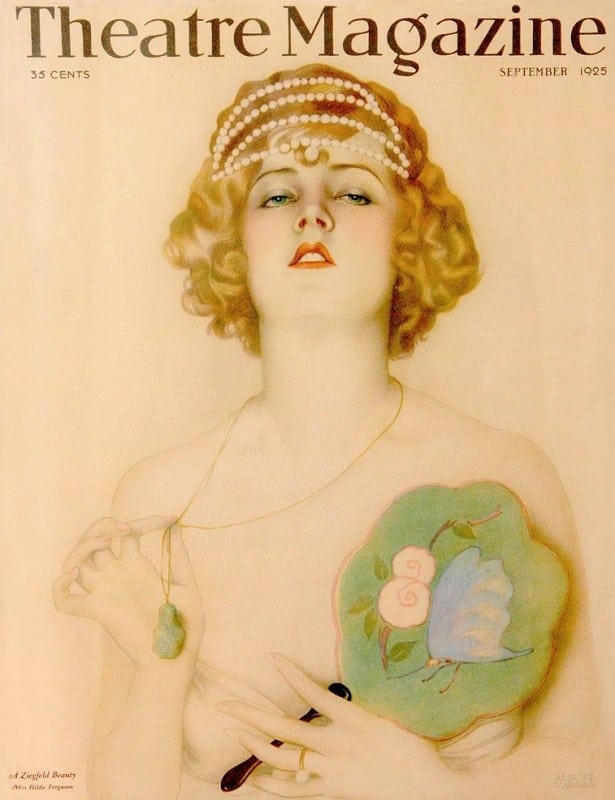
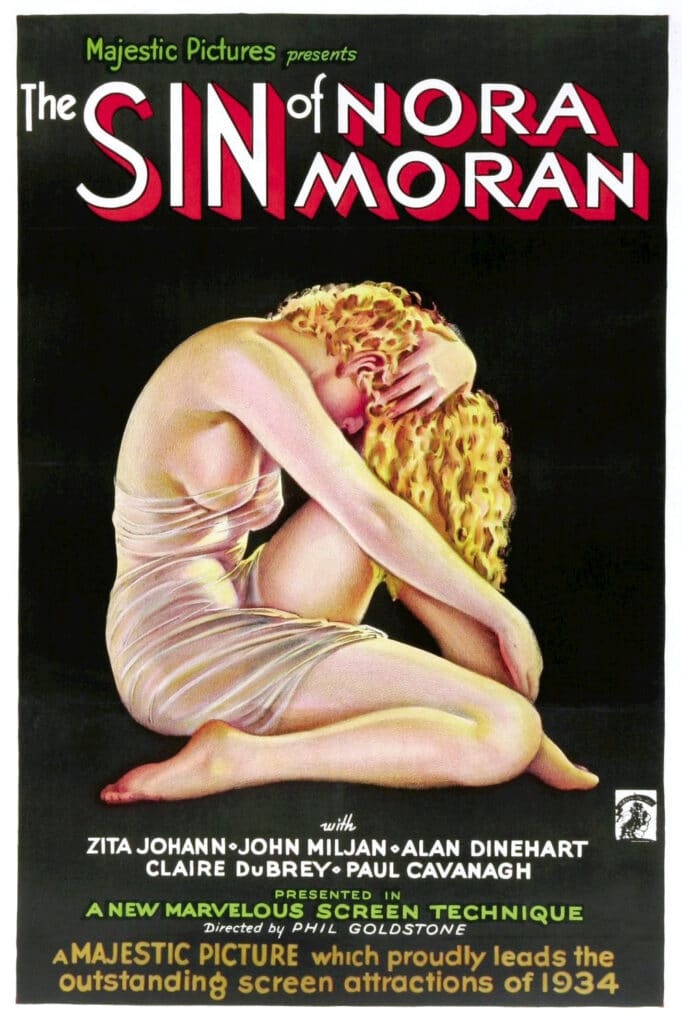
Years with Esquire Magazine
In May of 1940 Vargas returned to New York and began working for Esquire magazine, a career move that would prove both transformational and disastrous. Taking over for ousted Esquire pin-up artist George Petty, famous for his illustrations for Jantzen swimwear, Vargas began producing monthly paintings of beautiful pin-ups for an audience of men, including American GI’s mobilizing for World War II in Europe who were entranced by illustrations of patriotic, optimistic, and winsome young women that Esquire coined “Varga Girls,” the “s” being removed from Vargas’ name by the magazine. Under his contract with Esquire, Vargas produced 180 paintings over six years and contributed his work annually to an Esquire “Varga Girl” calendar which was enormously popular with readers and highly profitable for the publication. Although knowledgeable about art and illustration, Vargas was unfortunately not as savvy with business, and the contracts he had naively signed with Esquire left him overworked, underpaid, and without control of his own name or art. Vargas lodged a lawsuit against the publication but ultimately lost on appeal, and in the process, lost his right to the name “Varga” and all his “Varga Girl” work. Broken and in massive debt, Vargas and his wife moved back to California and embarked on a series of endeavors to try to rebuild his career.
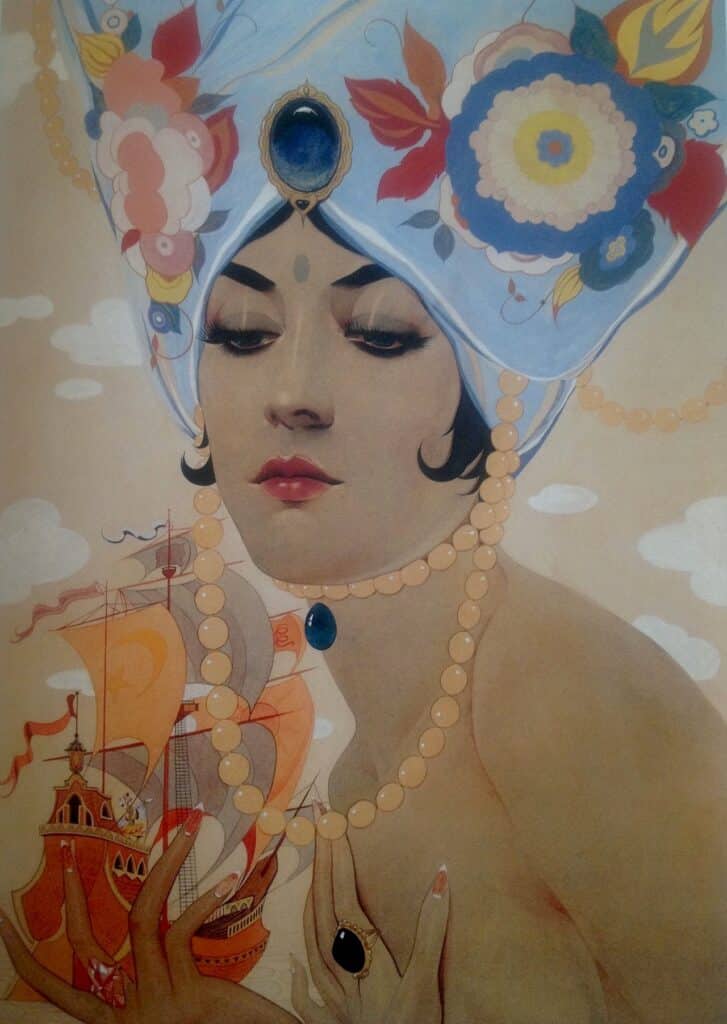
A Turning Point – Playboy Magazine
Finally, in the early 1950s, Vargas met Reid Austin, an art director for then-fledgling Playboy magazine. Austin and publisher Hugh Hefner were entranced by Vargas’ work and began regularly featuring his pin-up illustrations, now called “Vargas Girls,” with the “s” returned to the artist’s name. Vargas’ career with Playboy allowed his work to flourish, and he produced 152 paintings for the publication over a sixteen-year span. He also regularly exhibited his art during this period in galleries all over the world. Although Vargas’ work for Playboy was a far cry from his sensitive, evocative earlier works, such as his poster for The Sin of Nora Moran, his illustrational style became the benchmark to which other pin-up artists would aspire and created a roadmap for rendering the beauty of the twentieth century woman.
Later Years
Vargas’ career and life took a turn when his beloved wife and long-time muse Anna Mae passed away in 1974. In his grief, Vargas stepped away from his work and produced little in the remaining years of his life, although his autobiography was published in 1978. Since his death at the age of 86 in 1982, there has been renewed interest in Vargas’ work, with originals and prints selling for high prices in galleries and at auction. Much of his work that was in the possession of Esquire magazine now resides at the University of Kansas in the Spencer Museum of Art.
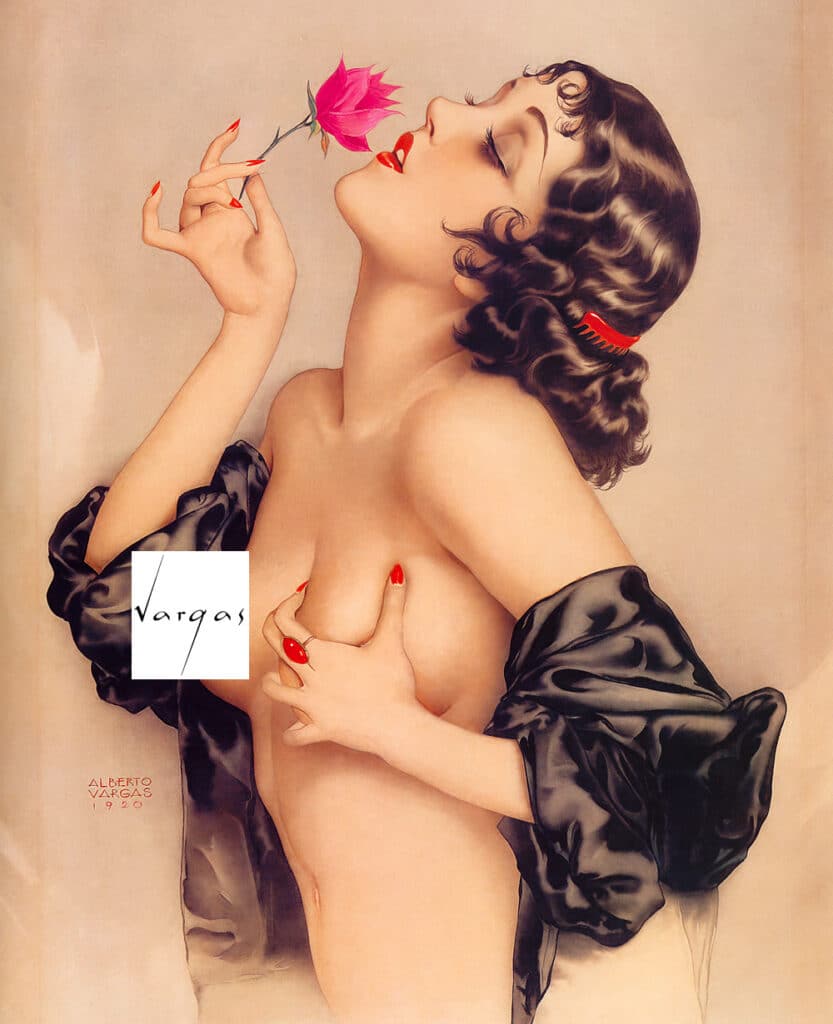
The Legacy of Alberto Vargas
The soft, idealized, sensitive treatment of pin-up models that Alberto Vargas created in the early twentieth century would go on to define the artistic treatment of the genre for many other artists of the era. Vargas’ obvious appreciation for the modern woman and her attraction informed his art, and conversely, because of its enormous popularity and appeal, his artwork also influenced women’s beauty standards. Although Vargas did not set out to become the King of Pin-Up Art, his legacy, born of financial necessity, has given the world his vision of womanhood, while, in the modern era, opening a discussion about beauty, appeal, and the male gaze. As in many forms of art and culture, a retrospective assessment often changes our perspective. But for Alberto Vargas, there was only one woman whom he honored with every painting he created, and his rendering of the female form was always a celebration of his beloved wife, model, and inspiration, Anna Mae.
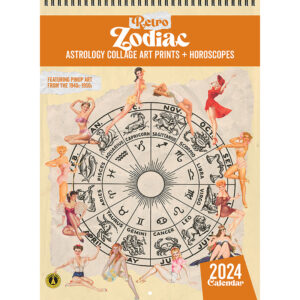 If you enjoy vintage pin-up art (that is safe for work!) then you’ll love our new 2024 Retro Zodiac Calendar, a collection of collage art featuring vintage pin-ups. Each print is easily removed from the calendar and fits standard size 11″x14″ picture frames. See the calendar here.
If you enjoy vintage pin-up art (that is safe for work!) then you’ll love our new 2024 Retro Zodiac Calendar, a collection of collage art featuring vintage pin-ups. Each print is easily removed from the calendar and fits standard size 11″x14″ picture frames. See the calendar here.

